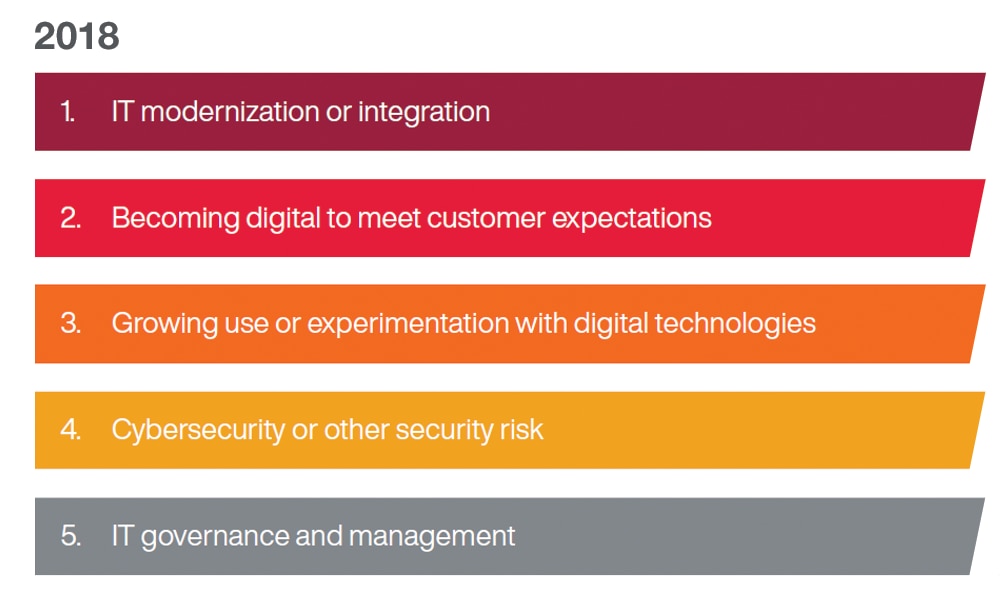To play this video, enable Statistics cookies. Google/YouTube may process your data – Learn more.
Annually, CGI leaders around the world meet face-to-face with business and IT executives to gather their perspectives on the trends affecting their enterprises, including business and IT priorities, spending and investment plans. Our experts analyze the findings from these conversations to provide a valuable global antenna that helps both our clients and CGI identify and benchmark industry best practices. These insights support strategic and business planning and facilitate dialogue on how we can work together to convert these insights into action for the benefit of clients’ customers and citizens and drive relevant and continuous innovation.
- Industry trends
-

Becoming digital to meet customer expectations remains the highest-impact trend
Meeting the expectations of customers and citizens for digital services remains the top industry trend this year in terms of its impact on client organizations across industries—as in 2018. However, other trend rankings have shifted in terms of their impact. Most notably, client executives cite IT modernization and integration as second most impactful, significantly more than in 2018.

Becoming digital and cybersecurity were highest-impact trends.
In 2018, becoming digital to meet customer expectations and cybersecurity or other security risk were the first and second top trends, respectively. Following at third was cost or budget pressures, with responding to regulatory requirements and applying analytics rounding out the top five trends for the year
- Business priorities
-

Customer’s digital needs continue as the top priority, while IT modernization emerges
We see some consistency in the most important business priorities for client executives globally, year-over-year, with becoming digital to meet customer expectations, agile models, and operational improvements continuing as the most important priorities.

Becoming digital and agile business or IT models were top of mind
In 2018, the top business priority based on importance was becoming digital to meet customer expectations, followed by agile business or IT models and operational or business improvement. Cybersecurity and other security risk and applying analytics rounded out the top five business priorities for the year.
- IT priorities
-

IT modernization remains top of mind, while agile surpasses cybersecurity as a priority
Similar to the pattern for business priorities this year, executives’ three most important priorities are consistent with 2018: IT modernization, becoming digital to meet customer expectations and growing use or experimentation with digital technologies.

IT modernization and becoming digital were top IT priorities.
In 2018, the top IT priority based on importance was IT modernization, followed by becoming digital to meet customer expectations and growing use or experimentation with digital technologies. Cybersecurity and other security risk and IT governance and management rounded out the top five IT priorities for the year.
Digital transformation is a journey that takes time. While 96% of executives cite having a digital strategy in place at some level, only 10% are producing results at the enterprise level.
*Includes enterprise strategy and enterprise strategy extending to external ecosystem
Benchmarking
For the second year, business and IT executives interviewed ranked their satisfaction with their own IT organizations based on the 10 key attributes of a world-class IT organization, providing a comparative view of business and IT satisfaction both within and across industries.
Innovation investment
As in the past few years, executives frequently cite investments in becoming digital to meet customer requirements as a driver for innovation investments. However, in the three year-view, analytics emerges as the most frequent innovation investment option.
Cloud usage
Thirty-six percent of executives indicate cloud usage for their own organization, 3% for customers and 38% for both. However, nearly one third do not have clarity on whether their organizations have mechanisms in place to locate where key data assets are stored in the cloud














